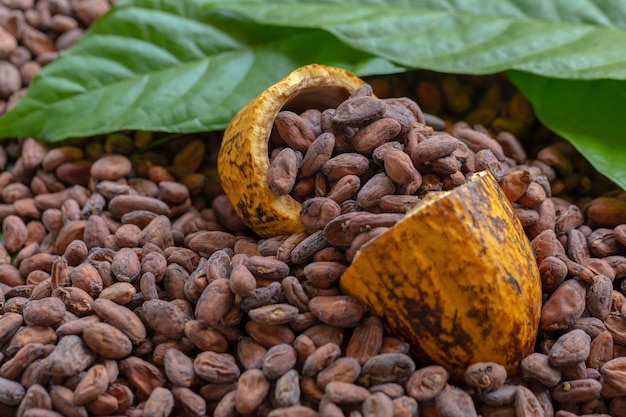Cocoa prices have exhibited resilience this year amid concerns about the cocoa supply, particularly in Nigeria, where cocoa output has been dwindling. As of the latest update, LIFFE Cocoa futures traded at GBP 3,557 per ton in London, reflecting a year-to-date increase of 72.4%. This value is not far from the 52-week high of GBP 3,634 per ton.
The globally accepted benchmark for determining cocoa prices is the London Cocoa Futures contract. Noteworthy producers in West Africa, including Côte d’Ivoire, Ghana, Nigeria, and Cameroon, collectively contribute around 70% of the world’s cocoa supply.
According to data from the International Cocoa Organization, Nigeria, the most populous African country, ranks as the fourth-largest cocoa producer globally, contributing over 5% to the world’s cocoa supply. However, it falls behind major producers like Côte d’Ivoire and Ghana, which collectively satisfy more than half of global demand and are often focal points in corporate sustainability initiatives.

Nigeria is anticipated to experience a decline in cocoa harvest, falling below 300,000 tons this year due to factors such as aging cocoa trees and pest infestations leading to reduced yields. World Bank trade data, coupled with information from Nigeria’s export council, indicates that over 60% of Nigeria’s cocoa is exported to Europe, with an additional 8% directed towards the United States and Canada.
The European Union, being the largest purchaser of West African cocoa, implemented new regulations in the second quarter of this year, mandating deforestation-free products. Companies involved in cocoa trade are required to certify that their products do not contribute to deforestation. To address this, experts from the Cocoa Institute of Nigeria have initiated the Trace Project in six southern states to combat deforestation in cocoa production and ensure compliance with European regulations.
In a significant development, the Ivory Coast, the world’s leading exporter of cocoa, has suspended forward sales for the 2023-24 mid-crop, which commences on April 1, 2024. This decision is aimed at allowing a comprehensive review of the nation’s production forecast.
Ghana, another prominent cocoa-producing country, has faced challenges such as reduced yields and deforestation. In response, farmers have incorporated shade trees on their farms as a strategy to mitigate these issues. The interruption in cocoa sales in the Ivory Coast adds to the uncertainties surrounding the cocoa supply in the region. If this disruption persists into the upcoming season, the consequences may intensify.
Adding to the concerns about cocoa production, Ghana’s 2022/23 cocoa crop is projected to be approximately 683,000 metric tons, marking a 13-year low and a 24% decrease from initial estimates of 850,000 metric tons. Factors such as a shortage of fertilizers and the impact of black pod disease have contributed to this decline. Regular rainfall is crucial for cocoa crops, but Ghana has experienced heavy and prolonged rains, making the cocoa plants more susceptible to diseases.
The shadow of climate change looms large over the cocoa industry. Forestry operations are witnessing an increase in the number of old and sick trees, while the agriculture and public health sectors grapple with decreased crop yields and the spread of diseases.
Looking ahead, projections from Fortune Business Insights indicate that the global market for cocoa and chocolate is expected to surpass $68 billion by 2029, rising from a valuation of $48 billion in 2022. As the industry contends with various challenges, including supply chain disruptions, climate change impacts, and regulatory changes, stakeholders will need to adapt and innovate to ensure the sustainability of the cocoa sector.
Support InfoStride News' Credible Journalism: Only credible journalism can guarantee a fair, accountable and transparent society, including democracy and government. It involves a lot of efforts and money. We need your support. Click here to Donate
